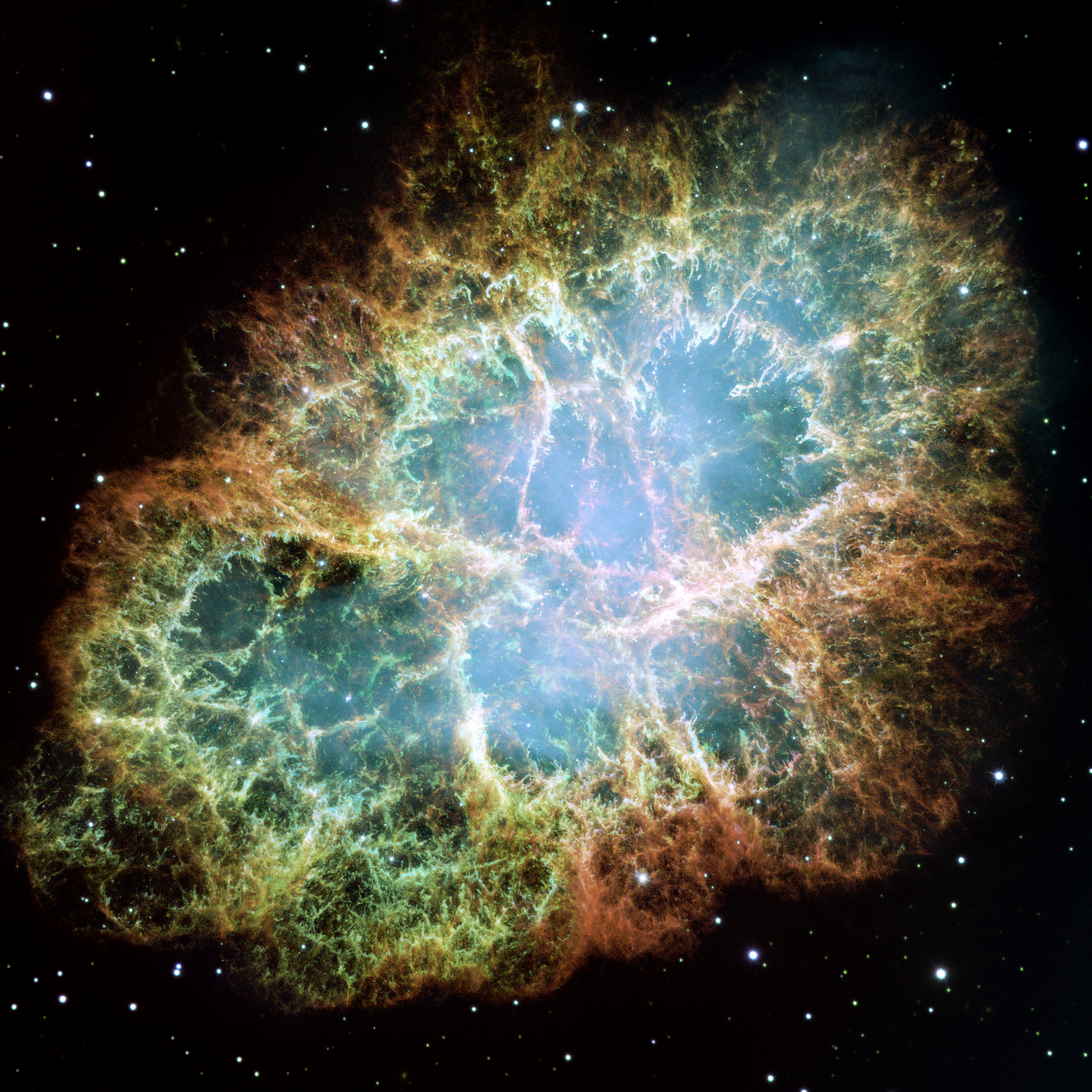
M1 – Crab Nebula
The Crab Nebula is an expanding remnant of a star's supernova explosion. Japanese and Chinese astronomers recorded this violent event nearly 1,000 years ago in 1054 AD, as likely did the Native Americans. The glowing relic has been expanding since the star exploded, and it is now approximately 11 light-years in width. This Hubble mosaic is one of the largest images ever taken of a supernova remnant by the space telescope. It is also the highest resolution image ever made of the entire Crab Nebula, which is located 6,500 light-years away. The composite was assembled from 24 individual exposures taken with Hubble's Wide Field and Planetary Camera 2 in October 1999, January 2000, and December 2000. The orange filaments are the tattered remains of the star and consist mostly of hydrogen. The rapidly spinning neutron star embedded in the center of the nebula is the dynamo powering the nebula's eerie interior bluish glow. The blue light comes from electrons whirling at nearly the speed of light around magnetic field lines from the neutron star, which is the crushed, ultra-dense core of the exploded star. Like a lighthouse, the neutron star produces twin beams of radiation. From Earth, it appears to pulse 30 times a second due to the neutron star's rotation sweeping the beams across our line of sight. It has the mass equivalent to the Sun crammed into a rapidly spinning ball of neutrons 12 miles across. The nebula derived its name from its appearance in an 1844 drawing made by Irish astronomer Lord Rosse, who used a 36-inch telescope. When viewed by Hubble, as well as by large, ground-based telescopes, the Crab Nebula takes on a more detailed appearance that yields clues into the spectacular demise of the star. It has been found that the knots lie relatively close to the source of the ionizing radiation, which may lead to higher gas temperatures of the knots than expected. This limits our understanding of the structure of the nebula and what role magnetic fields may play as the material expands outward and eventually combines with other material to form new stars. Hubble has been used to determine several northwest-southeast (upper right to lower left) asymmetries in the nebula's filaments, as well as the development of long "fingers" of gas and dust. This has been attributed to the sideways motion of the neutron star in the northwest (upper right) direction. Hubble observations of the Crab Nebula along with data from other observatories have been used to investigate the expansion and magnetic fields of the nebula remnant from the explosion. For more information please visit: hubblesite.org/contents/news-releases/2005/news-2005-37.html
